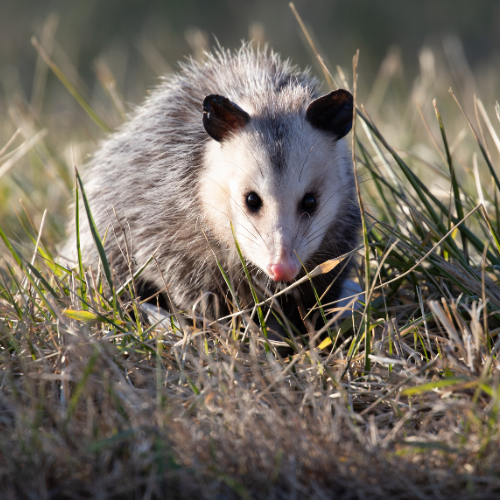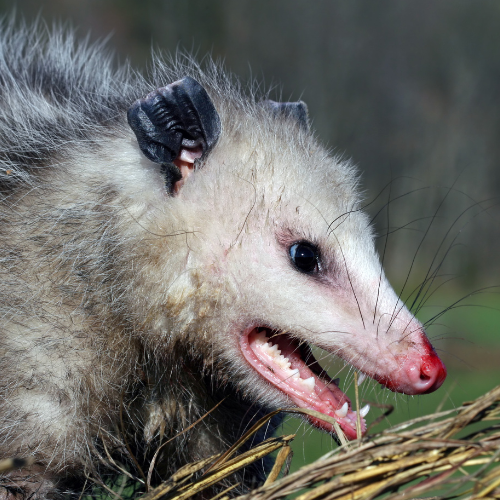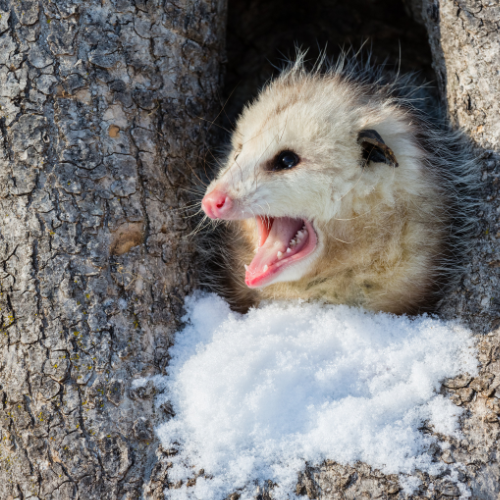Opossums
Introduction to
Opossums, often referred to as “possums,” are unique marsupials commonly found in North and South America. Known for their distinctive appearance and nocturnal habits, these creatures play a vital role in the ecosystem. Despite their somewhat eerie reputation, opossums are beneficial in controlling pests and maintaining ecological balance. This article will delve into the recognition, biology, habits, prevention, and professional handling of opossums, providing a comprehensive understanding of these fascinating animals.
Recognition
Opossums are easily recognizable due to their distinctive features. They typically have a pointed snout, sharp teeth, and large, hairless ears. Their fur is usually grayish-white, and they have a long, prehensile tail that is partially hairless. Adult opossums can range in size from 21 to 36 inches, including their tail, and weigh between 4 to 15 pounds. Their eyes have a dark ring around them, giving them a slightly masked appearance. Opossums have a characteristic slow and deliberate movement and can often be seen scurrying around at night in search of food.
Biology
Opossums are the only marsupials found in North America. They have a unique reproductive system, with females possessing a pouch where their young continue to develop after birth. A typical opossum pregnancy lasts about 12-14 days, after which the tiny, underdeveloped offspring crawl into the mother’s pouch to continue growing. They can have multiple litters per year, with each litter consisting of up to 20 offspring, although not all survive. Opossums are omnivores, feeding on a diverse diet that includes fruits, vegetables, insects, small animals, and carrion. They have an impressive immune system, resistant to many snake venoms and rabies.
Habits
Opossums are nocturnal and solitary animals, mainly active during the night. They are scavengers, often foraging for food in urban areas, which sometimes brings them into conflict with humans. Opossums are excellent climbers and swimmers, often seeking shelter in trees, abandoned burrows, or man-made structures. When threatened, they may exhibit behaviors such as playing dead (“playing possum”), hissing, or growling to deter predators. Despite their fierce appearance when threatened, they are generally non-aggressive and prefer to avoid confrontations.
Prevention
To prevent opossums from becoming a nuisance, it is essential to remove potential food sources and shelter options from around your home. Secure garbage bins with tight-fitting lids, bring pet food indoors at night, and clean up fallen fruits or vegetables from gardens. Ensure that any entry points to attics, basements, or crawl spaces are sealed. Using fencing or barriers around gardens and compost bins can also be effective. Additionally, trimming tree branches that overhang roofs can prevent opossums from accessing attics or other parts of your home.
Professional
If you find that opossums have become a persistent problem, it may be necessary to contact a professional pest control service. STL Pest Control offers expert handling of opossum infestations. Their trained technicians use humane trapping and relocation methods to ensure the animals are safely removed and relocated to appropriate habitats. Additionally, they can provide advice and services to help secure your property against future intrusions. Professional services are particularly useful for addressing larger infestations or situations where opossums are causing significant damage or distress.



Our Office









